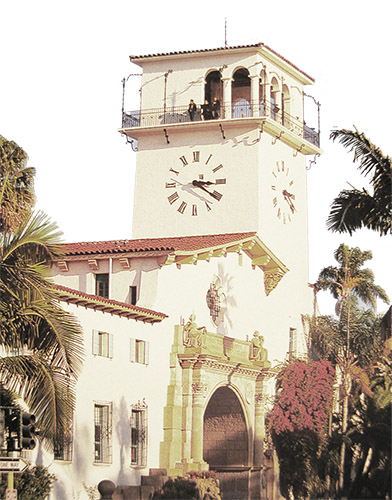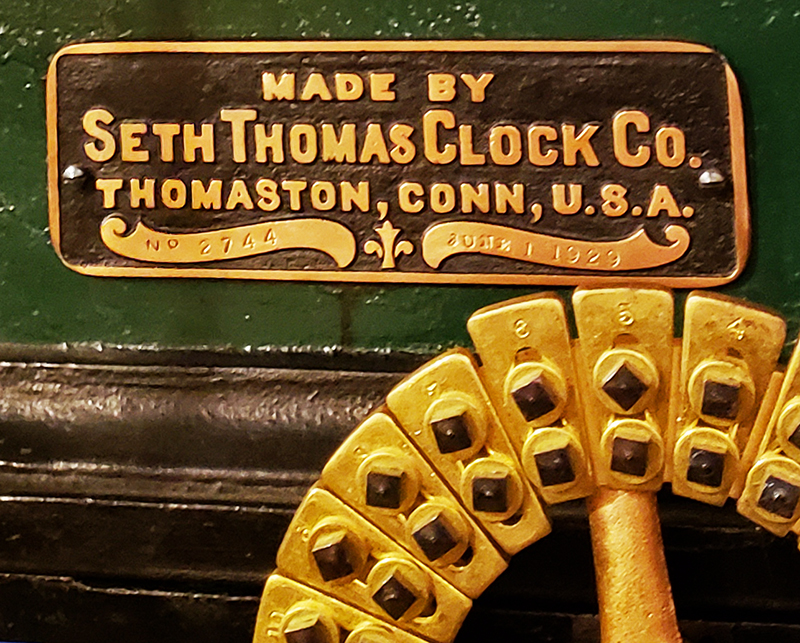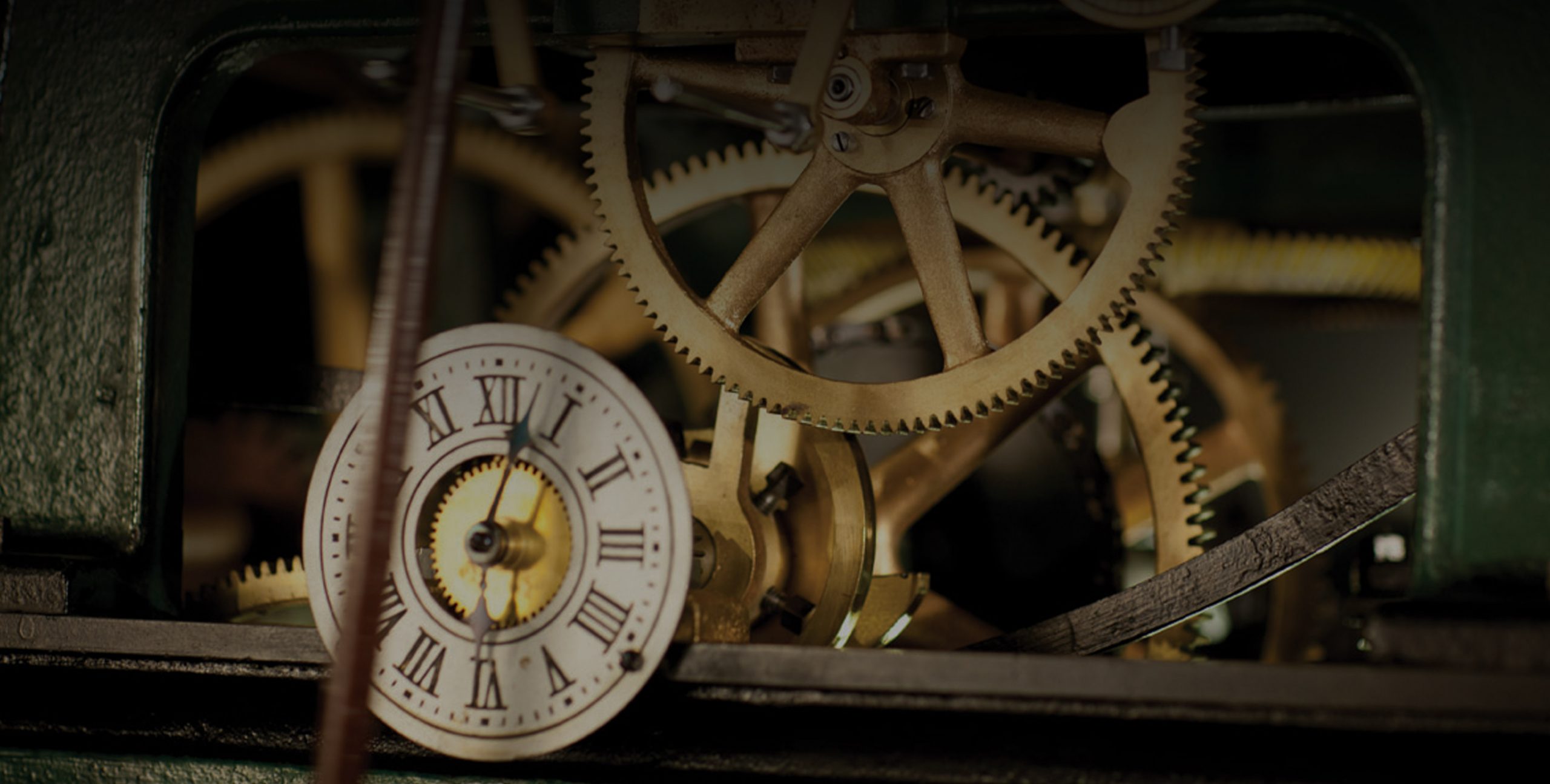
The Santa Barbara Courthouse tower clock was first installed in the late summer of 1929 four years after the city’s devastating earthquake – near the completion of this monumental civic complex.
Mechanical clocks were invented shortly before 1300 A.D., likely in England. Knowledge of the new technology spread quickly to France, Germany and Italy. The word “clock” comes from the Latin clocca, meaning bell. The earliest devices, monastery bells, alerted monks to the orders of the day. Before long, large complicated clocks were being made in urban centers, displaying the time on a dial and tolling a bell each hour. High up in churches and civic buildings, tower clocks became the standard to which the community looked and listened, upon which all became dependent for the start of the work day and for the time to go home. Deliveries, appointments, meetings – all regulated by an ingenious, mechanical device.
European horological technology made its way to the shores of America in the 1700’s. By 1800 many larger towns had a tower clock which provided the time and sense of connection for the community. By 1820 mission clock bells were ringing along the coast of California while Connecticut developed into the center for the American clock-making industry.
In 1810, Seth Thomas bought the clock factory of the famous Connecticut clockmaker Eli Terry and created the Seth Thomas Clock Company. So successful did Thomas become in the town
of Plymouth with his techniques of mass production and entrepreneurship that the town chose to divide itself, renaming the area containing the clock building complex – Thomaston. While the production of clocks ceased in the mid-1930s, the buildings still stand, being used today for other purposes.
One of the most profitable divisions of the Seth Thomas Company was that which designed and constructed tower clocks. By 1932, when company leadership passed out of Thomas family control, the firm had designed and manufactured considerably more than 2,700 tower clocks for buildings in 47 U.S. states and 26 foreign countries.
When Santa Barbara civic leaders planned the replacement of the community Courthouse following the 1925 earthquake, they naturally turned to the nationally known Seth Thomas Company for an appropriate tower clock. Similar decisions had been made for many prominent American buildings including Grand Central Station in New York, the Courthouse in Los Angeles and the Ghirardelli Chocolate Factory in San Francisco (whose designer, the William Mooser Company, designed the Santa Barbara Courthouse).
During the late summer of 1929 one of the last tower clocks to be made by the Seth Thomas Clock Company, # 2744, began telling the time to the community of Santa Barbara; its fine escapement and majestic pendulum have been faithfully ticking and reliably swinging ever since.
Clock Gallery Timepiece
The Santa Barbara Courthouse tower clock is a weight-driven, double, three-legged, gravity escapement masterpiece. Manufactured by the Seth Thomas Company (serial number 2744) and installed in 1929, it is one of the last tower clocks that company produced.
Because of the clock’s size and the fact that it sits in the center of the gallery while driving hour and minute hands on the tower’s four outside walls, you are literally standing inside the clock, and have the rare opportunity to visit its inner workings.
Watch the animated video explaining the clock by John Redfern

Mechanical Clocks Have Five Basic Components
Visual Our clock transmits energy through four leading-off rods to the hands on each of four clock faces on the outside tower walls. The minute hand is 7 feet long and weighs 20 pounds. The hour hand is 4 feet, 9.5 inches long and weighs 15 pounds. Because of their considerable weight, each of the hands is counterbalanced by thin metal rods, which the public rarely notices as the hands revolve around the 14-foot diameter clock faces.
Auditory The 1925 plans for the Courthouse clock called for bronze bells to chime from the top of the tower. But, the cost of the bells was prohibitive, and none were installed along with the clock. Nevertheless, the clock was delivered with the mechanisms needed to ring belles. When this gallery was created, facsimiles of five bronze bells were hung from overhead rafters and the original striking mechanisms were connected to the clock. When approached by the hammers, the bells electronically generate G sharp, F sharp, E natural, and B natural tones. This “Westminster melody” is heard on the quarter hours and hours.

